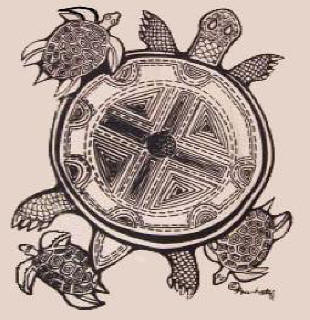 |
LITR 4231 Early American
Literature Research Posts 2014 (research post assignment) Research Post 1 |
 |
Stephanie Ali
Malinche’s Misfortune Being Born A Female
I first heard of Malinche in a book called Woman Hollering Creek and other
Stories by Sandra Cisneros. The story is yet another version of Malinche,
known as
La Llorona (Spanish
for "weeping woman"). In this version of the story, a beautiful woman by the
name of Maria marries a handsome, rich man who eventually loses interest in her.
Maria becomes mad and drowns her 3 children and herself in the river. When
approaching heaven, she is told she cannot enter until she finds her children,
whom she drowned. She returns to Earth in search of her children, weeping for
them. The legend says that her ghost will
abduct children at night and pull them in the river, mistaking them for her own
children. This story is used to frighten children to be obedient and not to go
out at night. This story has other versions as well, but that is the one I am
familiar with. Malinche has taken on different roles in history and her role is
unique. She is portrayed as a prominent figure in Nahua dress, translating for
Cortez and the Spaniards. When this mission ends, she is considered a traitor
and a promiscuous woman. There are no historical references to promiscuity. How
does her role take on a negative component? Bernal Diaz del Castillo wrote about
Malinche describing her as intelligent, noble, and an excellent woman.
Cortez, and her husband, Juan Jaramillo were the only two men she had
relations with according to text. Her
contribution to Spain’s Conquest lasted 10 years, and her mythical legend has
lasted some 400 years.
Malinche is
referred to by several names. Her birth name may have been Malinalli, or
Ce-Malinalli. Born into royalty in the Nahua tribe, her father dies and her
mother remarries. In fear of her inheriting her father’s wealth and not her
half-brother’s, her mother fakes her death and sells her as a slave to the
Aztecs. She learns several dialects of the Aztecs, and when given as a gift with
19 other women to the Spaniards, she acquires Spanish as well. Malinche’s fate
seems to match the Meso-American culture's belief that the date of one’s birth
pre-determines one’s fate. For Malinche, it is believed she was born on the 12th
day of the Aztec Calendar, known as Malinalli. This day is linked to a person
being rebellious, unlucky, and the fate of having one’s children taken away from
them. Indeed, she was sold into slavery,
had a son that was taken away from her, and died at the young age of 27. She was
also marked as a traitor from her own people, although all along, her intention
was to help her people.
In 1519, at the
age of 18, she is given to Cortez. When
Cortez realizes her value as an interpreter, she becomes his right hand.
Malinche is baptized into Christianity and her name changes from Malinche to
Marina. Cortez promises that her involvement in translating will bring her
people to a better situation. She is abandoned by Cortez, and he marries her to
one of his officers who treats her with cruelty and unfaithful to her. Now, with
her son gone from her and trapped in a bad marriage, Marina is given the title
of traitor. Instead of honor for her attempt to establish peace between
Spaniards and Mayans, she is abandoned by her own people as well. The Mexican
term, “Malinchista” means one who devalues national identity and sells out to
foreign interests. This is a horrible blow she endures.
Marina is marked as a negative figure. She is also known as the mother of
all Mestizos. So what does that say about Mestizos, especially the women?
In my
research, the main idea of Marina’s negative figure is several reasons. First of
all, to study Marina is to study representations by other authors. Marina does
have her own work, as she was illiterate. Marina takes the role as a victim and
a victimizer. She is a sexual victim being a
concubine, and a
victimizer because she took part in the domination and destruction of her own
indigenous people. This is not fair, and she is not able to defend herself from
these roles. As a women, she is not allowed to be involved in warfare.
Therefore, her role must be a negative one. There is no room for a noble women
in the Spanish conquest. In addition, she is a woman, who is labeled weak. The
Mayan empire falls, and she takes the blame for it, because of her gender. In
order to neglect Marina’s noble actions, many myths and negative ideas are
attached to her. This is only on the grounds that she is female. It was more
fitting to attach promiscuity to her and the title of a traitor, but there are
no literary texts to support this idea. Even with no textual support, the role
and idea of women of this time period could not be venerated for their
achievements in a man’s world.
Works Cited
Malinche and Matriarchal Utopia: Gendered Visions of Indigeneity in Mexico
Mirrored Archetypes: The Contrasting Cultural Roles of La Malinche and
Pocahontas
José Limón's "La Malinche"
Mexico was not a country,The Legend of La Malinche, dan banda
Indigenous Always, will La Malinche ever catch a break?
|
|
|
|


